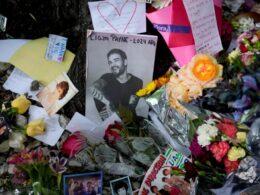One of the most densely populated places in the United States is, ironically, a “transit desert.” To get to work or school, the middle class residents of eastern Queens neighborhoods such as Glendale and Rego Park, endure packed New York City buses that move at a snail’s pace, or endure long walks in freezing winters and humid summers.
No wonder many of them choose a sluggish driving commute, even in the face of the nation’s first congestion pricing plan, aimed at curbing vehicle traffic by nudging more people onto public transit. As of Jan. 5, they are charging $9 to drive south of 60th St. in Manhattan, a toll scheduled to increase to $15 by 2031.
But in a far less publicized transit development last month, the U.S. Department of Transportation’s Reconnecting Communities Pilot Program awarded a $400,000 grant to Queenslink, a nonprofit determined to revive a rail corridor that has been shuttered since the 1960s. Known as the Rockaway Beach Branch (or Queens Boulevard Line) of the Long Island Rail Road, this right-of-way could facilitate the expansion of the subway’s M train. The restored line would create a vital crosstown link for up to 47,000 daily riders, easing congestion on city streets and relieving pressure on subway lines like the E, F, and R.
Adopting the successful strategy Atlanta applied to its own elevated train tracks, QueensLink envisions a “rails-with-trails” plan coupling elevated bicycle and pedestrian paths alongside the subway extension to bring value to the neighborhood. A 2017 Georgia State University study of the Atlanta Beltline’s impact found that within a half-mile of the new rails and trails, home values rose between 17.9% and 26.6% more than elsewhere.
Still, for all its promise, the plan faces serious hurdles.
Queens also needs more green space. With limited uninterrupted areas for walking and cycling, the urge to turn this corridor exclusively into a park — akin to Manhattan’s High Line — is understandable. Green advocates who envision a tranquil elevated park fear that a subway line would undermine the corridor’s ecological potential, disturb its serene atmosphere, and take up space.
Yet scrapping the tracks entirely would forfeit an opportunity to fortify the city’s transit backbone, especially as ridership rebounds post-pandemic. In a transit-dependent city like New York, dedicating this unique right-of-way to a single-purpose park would squander the rare opportunity to grow the system without the usual rigors of digging new tunnels or laying entirely new track. Building or expanding subway lines usually demands massive political capital, billions of dollars, and the resolve to navigate local opposition.
The Metropolitan Transportation Authority, meanwhile, has earned a reputation for sky-high expansion costs, chronic delays, and budget overruns. The MTA often leads the world in per-mile construction expenses, making even a seemingly straightforward revival of an existing line an administrative challenge. For example, the first phase of the Second Avenue Subway, extending the Q train, took nearly a decade to complete — opening in 2017 instead of 2013 — at a staggering cost of $4.45 billion, or about $2.5 billion per mile, making it one of the most expensive transit projects in the world.
New York City’s collective bargaining environment further complicates matters, driving wages and regulations to levels that inflate construction costs beyond national norms. For example, the East Side Access project employed 200 additional workers at $1,000 per day each without clear justification, contributing to its $12 billion price tag — making it the world’s most expensive infrastructure project per mile.
The other consideration is that with subway crime stubbornly high, some southeast Queens residents — who stand to benefit the most from improved transit — may be hesitant to trade cars and buses for trains if they perceive safety to be lacking. Incidents like the recent attack where a woman was set on fire while sleeping on a subway train have heightened public fear. Time will tell if Gov. Hochul’s response — a proposal to expand involuntary commitment laws to allow hospitals to compel more mentally ill individuals into treatment — will address the surge in subway violence.
In the end, the pressing need for both improved transit and accessible green space makes this corridor a prime candidate for a rails-with-trails solution. It may be ambitious, and it will require a remarkable degree of cooperation among transit officials, city planners, labor unions, and local residents. But if the city can balance competing interests — tackling cost concerns, respecting the environment, and keeping the community front and center — Queens could reclaim a discarded stretch of track and transform it into a visionary asset for generations to come.
Dreyer is a cities policy analyst at the Manhattan Institute.








